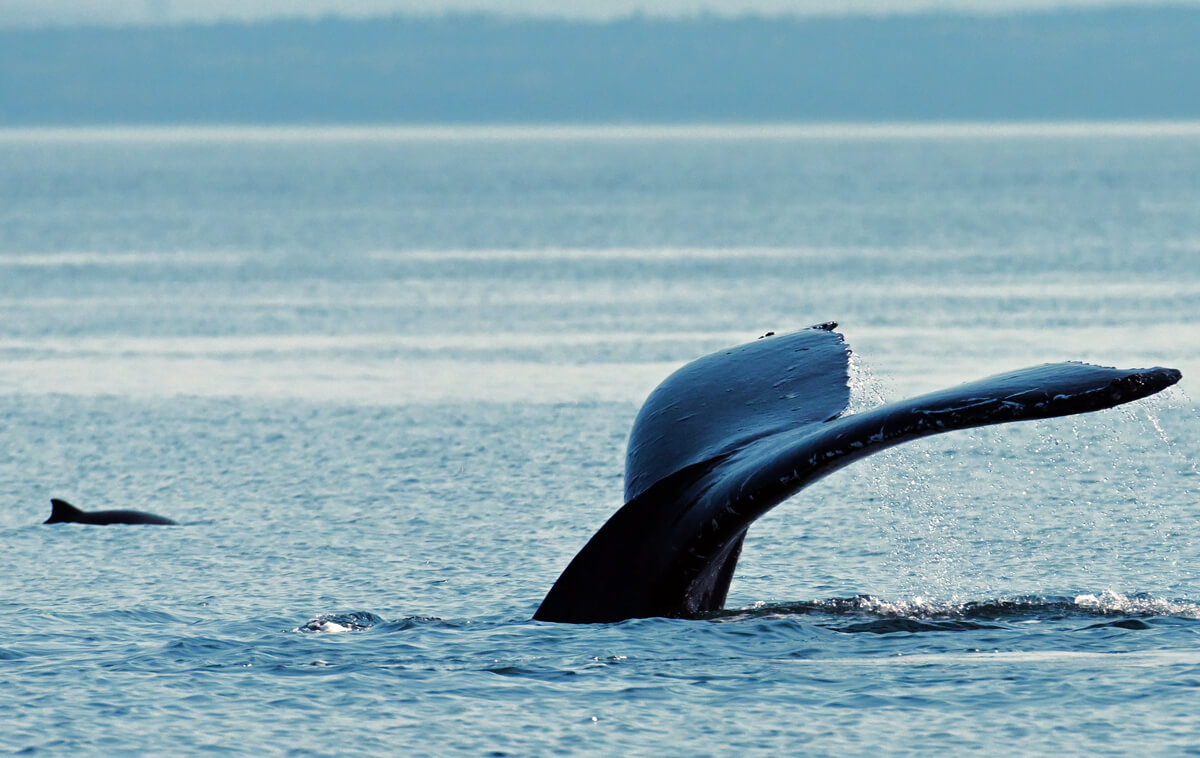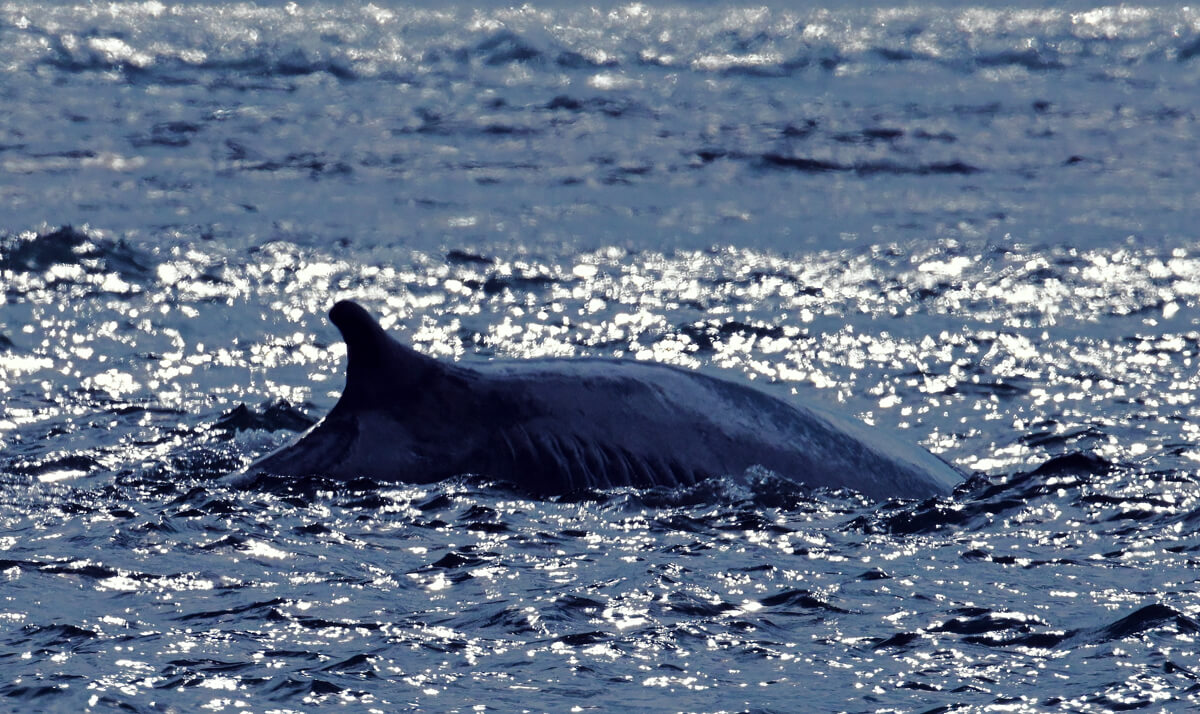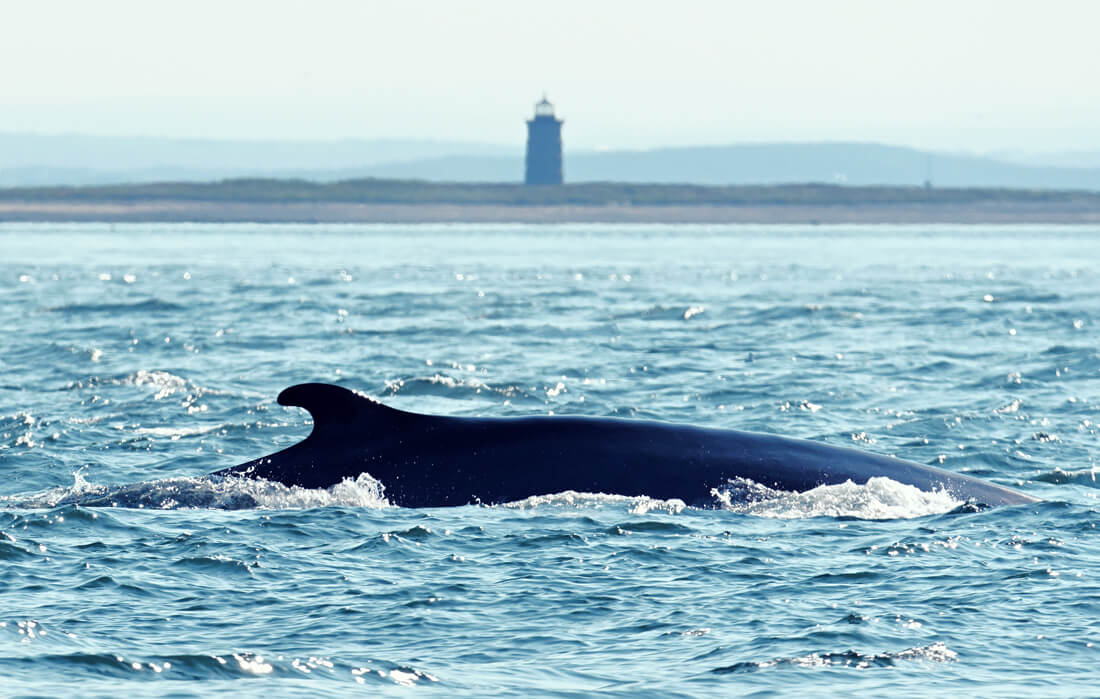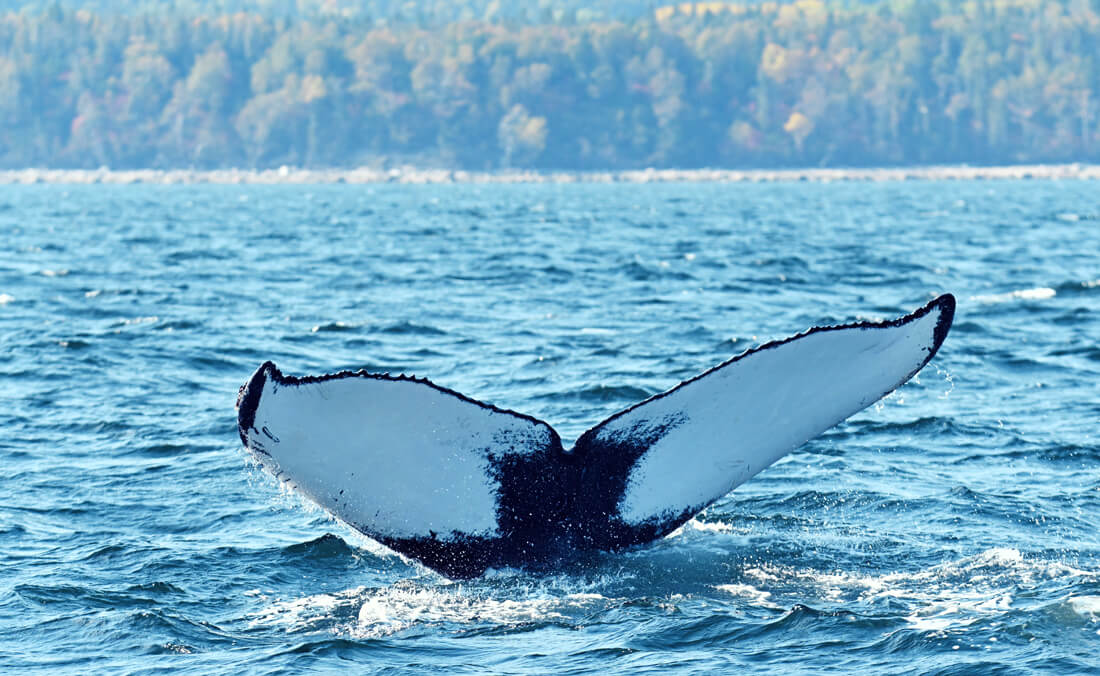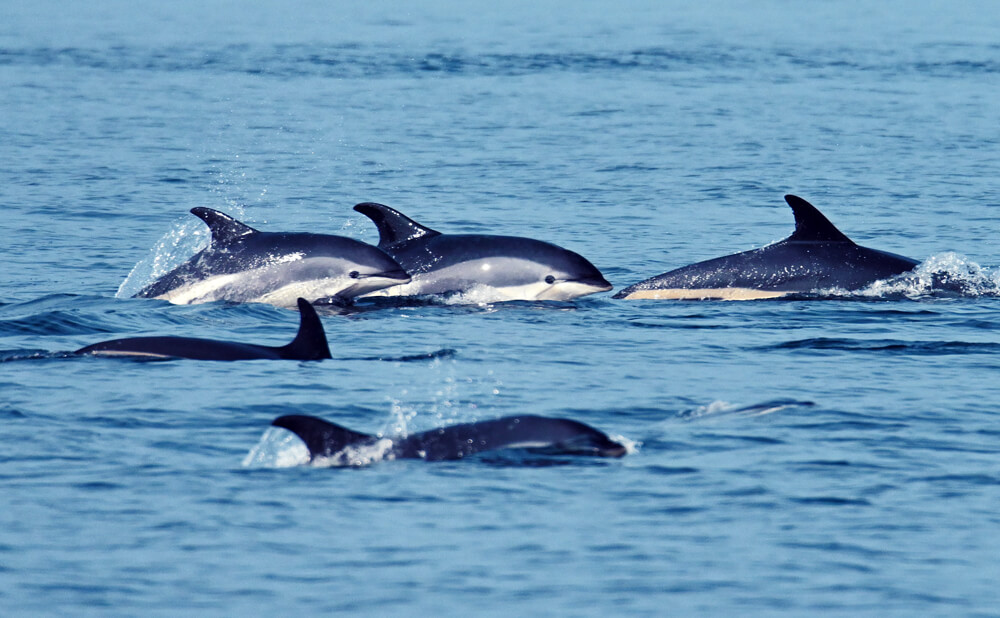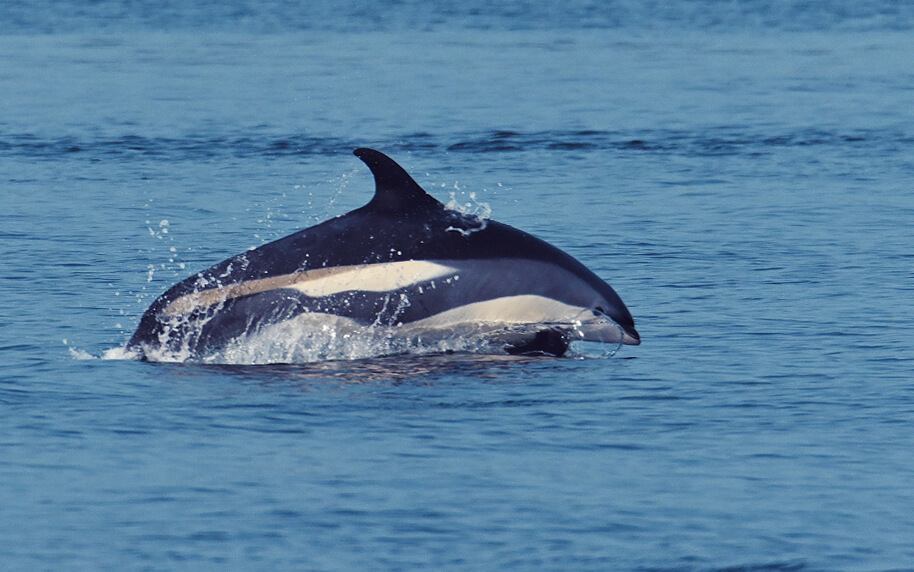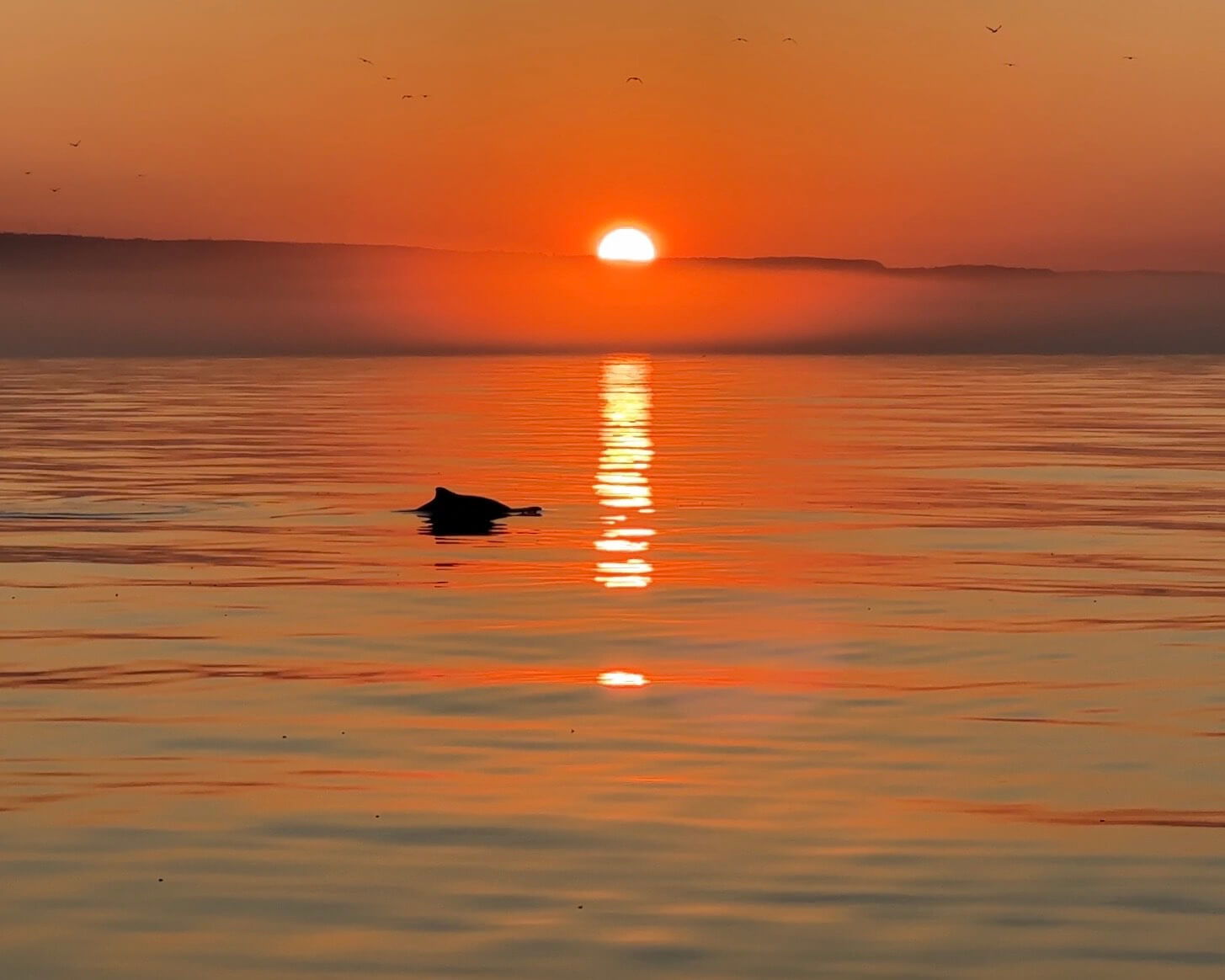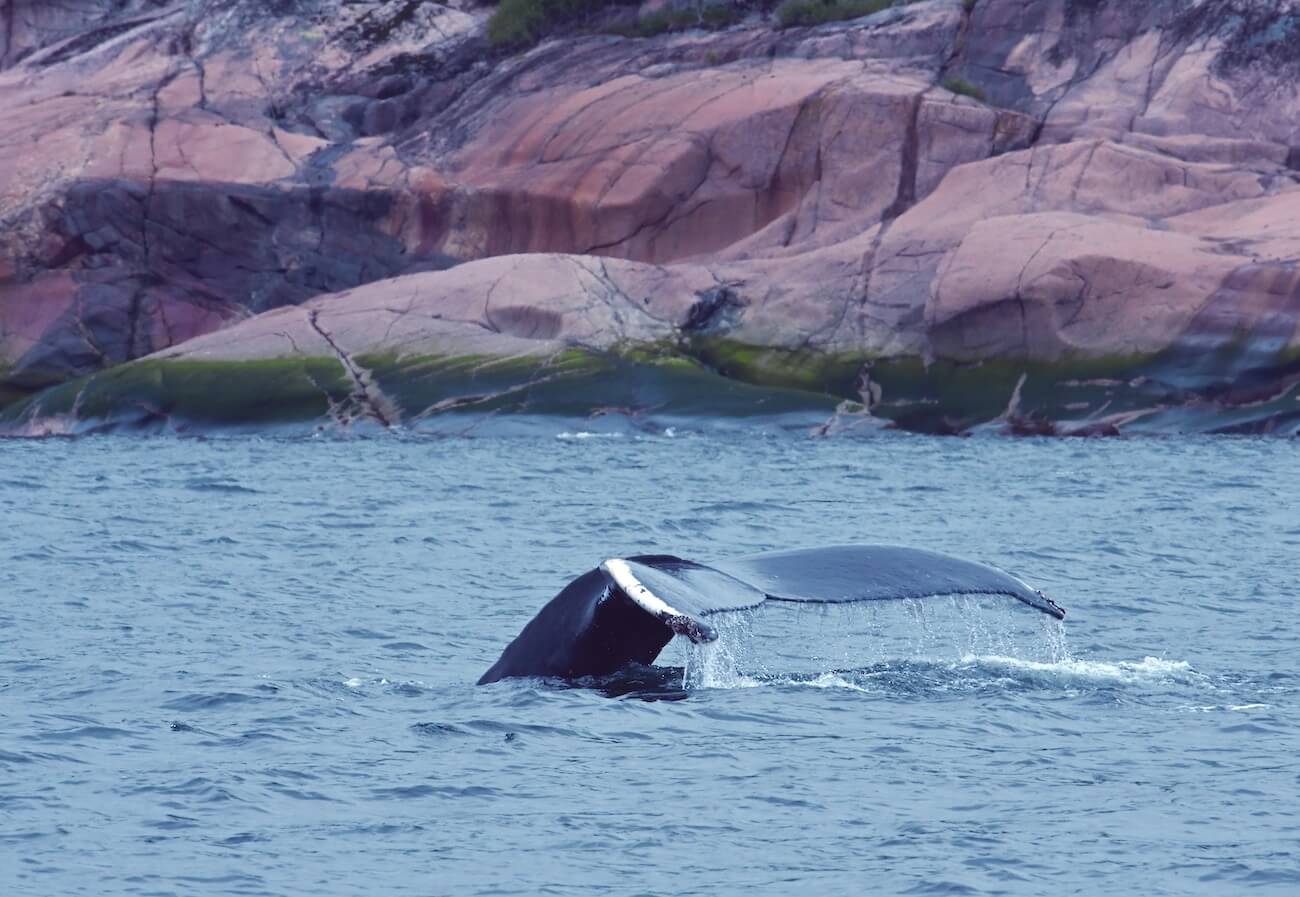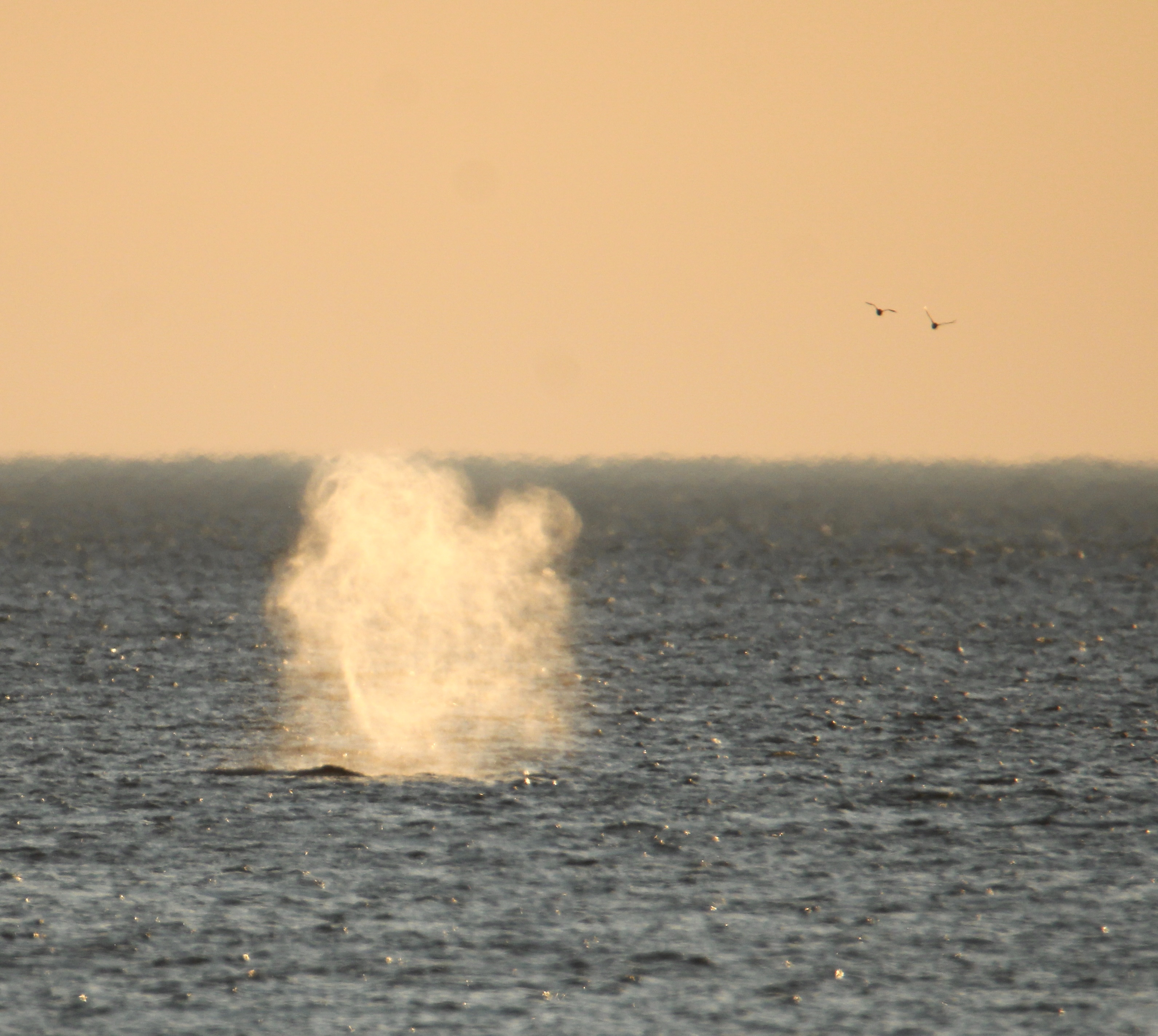New whales continue to arrive in the St. Lawrence and marine diversity is matched only by the palette of colours in the foliage. While the leaves are ablaze with yellow, orange and red, the water is punctuated by the dark backs of North Atlantic right whales between the Mingan Archipelago and Sept-Îles. Meanwhile, the white and yellow flanks of white-sided dolphins streak across the horizon in Pointe-des-Monts. One thing the Gaspé Bay and Franquelin sectors had in common this week was the presence of a wide array of cetaceans! Humpback whales are still present in large numbers, and two well-known fin whales were also identified.
Zipper and Ti-Croche
The female fin whale Bp097 shows a zipper-shaped scar on her right flank, hence her nickname. Known since 1994, Zipper is a regular visitor to the Estuary. At the time, her wound – which has been attributed to a run-in with a boat propeller – was fresh and still raw. Although it has since healed, this scar is a constant reminder of the importance of protecting marine mammals.
The second fin whale identified is Bp955, a.k.a. Ti-Croche. This individual owes its moniker to the shape of its slightly crooked dorsal fin. Ti-Croche is the descendant of Captain Crochet, a legendary fin whale in the estuary that sadly disappeared in 2013. She was last seen in spring of that year, ensnared in crabbing gear. Attempts were made to disentangle the animal, but unfortunately to no avail. Captain Hook has not been seen since June 13, 2013, and everything leads us to believe that she ultimately succombed to her entanglement. Today, Ti-Croche and Zipper freely roam the waters of the St. Lawrence, bringing hope for the conservation of this endangered species. Again and again, these stories demonstrate the significant threat posed by human activities.
Beauty in the estuary
To all those visitors who wonder if there are still any whales left in the estuary, know that the season is far from over! A wide diversity of marine mammals is still present in the sector. The Marine Mammal Interpretation Centre remains through the end of October to tell you about it.
Par une belle journée d’automne, un groupe de cinq à six bélugas est aperçu dans la baie de Tadoussac en matinée. Plusieurs marsouins et un phoque commun enrichissent les observations au Cap-de-Bon-Désir. Mais ce n’est pas tout! Lors d’une journée sur l’eau, dans le parc marin du Saguenay-Saint-Laurent, le bateau de recherche du Groupe de recherche et d’éducation sur les mammifères marins a repéré plus de 200 de ces petites baleines blanches. Les dauphins à flancs blancs sont toujours présents, de même que plusieurs thons rouges bondissant parmi les vagues ici et là. Depuis la rive, on distingue aussi des petits rorquals, des phoques gris ou encore des rorquals à bosse. D’ailleurs, la saison semble loin d’être terminée pour ces derniers, puisque certains individus en profitent même pour visiter l’estuaire pour la première fois cette année! Ces grands cétacés ne cesseront définitivement jamais de nous étonner.
Whales aplenty
The glee amongst the regulars was palpable: “We didn’t even know which way to look,” “Pure joy just watching from shore.” There was certainly plenty of action in Franquelin over the past week! Between all these cetaceans, pinnipeds and even fish, it was enough to make your head spin! One marine mammal aficionado had the chance to see a humpback whale breach no fewer than three times, the animal then vigorously slapping its tail on the water surface. “A little later, from a different land observation site, pectoral fins were flailing in the setting sun, the sound echoing off the surface of the otherwise calm water. It’s always impressive to see when you’re on the water, but here, from shore, it was just incredible!” she exclaimed. A little later in the week, she comes across a group of three humpbacks, while a large blow in the distance suggests the presence of a blue whale, though this remains to be confirmed. One resident also shares his most remarkable sightings: harbour porpoises, seals, tuna, not to mention krill and minke whales feasting on sand lance! In Baie-Comeau, minke whales also approached the wharf area to feed, much to the delight of those who were present to watch them. From Pointe-des-Monts, a local resident was also able to see white-sided dolphins as well as harbour and grey seals.
Between Anticosti Island and the Côte-Nord region, North Atlantic right whales were spotted by the Mingan Island Research Study (MICS) team. This endangered species has been present in the area for a good portion of the season. Right whales spend a great deal of time at the surface and are very slow swimmers. Their sluggish responsiveness to passing boats is an important factor in their mortality. However, their aerial feats are impressive: they leap out of the water and splash down on their back or belly, slapping the surface with their tail and pectorals.
Humpbacks are still entertaining observers in Gaspé. After spending a good part of the season in the bay, these large cetaceans have now moved a few kilometres off Cap Gaspé. These waters were teeming with other marine life as well, with reports of harbour porpoises, minke whales and dolphins. During an outing on the water, one avid whale-watcher was concerned about his physical well-being: “[It was] enough to give you a sore neck! Look left, look right, backward, straight ahead!” It’s hard to know where to turn when there are so many beautiful things to see wherever one looks!
Where are the whales this week? Observation map
These data were reported by our network of observers. They give an idea of the presence of whales and in no way represent the actual distribution of whales in the St. Lawrence. Use it for fun!
Click on the whale or seal icons to discover the species, the number of individuals, additional information or photos of the sighting. To enlarge the map, click on the icon in the top right-hand corner. The map works well on Chrome and Firefox, but not so well on Safari.
To display the list of sightings, click on the icon in the top left-hand corner.


